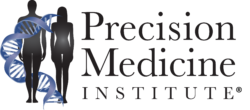Traditional solutions do not appear to be working, but labs are finding that next generation sequencing can play a role by consolidating testing to a single platform. This solution is a potential game changer for community and regional hospitals
When it comes to hematologic testing, a common problem faced by lab managers–and by extension the hospitals and health systems they serve–is how to work STAT testing seamlessly into the lab’s workflow. Traditional solutions do not seem to be working, but there is mounting evidence that in-house next generation sequencing (NGS) can play a role in improving STAT testing by consolidating testing to a single platform, according to Carl D. Morrison, MD, DVM, Senior Vice President of Scientific Development and Integrative Medicine at the Roswell Park Comprehensive Cancer Center in Buffalo, New York. He recently spoke with the Precision Medicine Institute to explain.

For the Precision Medicine Institute, Carl D. Morrison, MD, DVM, Senior Vice President of Scientific Development and Integrative Medicine at the Roswell Park Comprehensive Cancer Center in Buffalo, New York, described coverage and reimbursement aspects of NGS hematopathology testing compared to solid tumor testing. Morrison is one of three experts featured in an Aug. 12 webinar, hosted by Dark Daily and the Precision Medicine Institute. The free webinar covers aspects of the reimbursement outlook, NGS as a complement to cytogenetic analysis, and the clinical relevance of NGS-based immune repertoire studies.
Transforming Leukemia STAT Testing to Standard of Care
In the small to medium-sized molecular pathology laboratory, STAT testing presents a Catch-22 of sorts for lab directors. On the one hand, prioritizing STAT testing means that other lab work is interrupted and results are then delayed. On the other hand, ignoring STAT requests or delaying the work on them can lead to unnecessary and complex interactions between the laboratory director and other physicians and hospital administrators. Stakeholders have tried to address the problem by creating complex work schedules or hiring additional staff.
“But what if it was possible to treat all mutational analysis as a STAT order?” asked Morrison. “Actually, the solution has been made possible by combining robotic automation with the ability of next generation sequencing to analyze multiple analytes in one test.” Taking this approach costs less than hiring additional staff. What’s more, transforming STAT NGS hematopathology testing to standard of care results in better patient care and improved relationships with physicians, staff, and hospital administrators. Fast turnaround times are crucial for oncologists to make effective cancer treatment decisions, especially for critical cases where the patient doesn’t have time to spare.
A Potential New Approach to Reimbursement for Hematopathology NGS Testing
But what about coverage and reimbursement challenges that come with measuring multiple analytes in one test? If solid tumor testing is an indication, the potential for less-than-optimal coverage and reimbursement is high, noted Morrison. This is due to the fact that for solid tumors, precision medicine has almost always focused on one gene to one targeted therapy. For this reason, commercial and government payers tend to look at an NGS testing platform for several hundred genes less favorably versus using single gene testing.
However, there are significant differences in the clinical indications between hematopathology NGS testing and solid tumor testing. “There are multiple clinical indications in hematology oncology beyond targeted therapy associations that determine patient treatment,” Morrison noted. Clinical indications vary from risk stratification and prognosis to diagnostic evaluations. As opposed to solid tumor testing, clinical indications in hematopathology are much more well-defined. Additionally, with the exception of an extensive list of partner genes in fusion-related events, the number of genes that meet the criteria of defining clinical indications is more limited than with solid tumors. Combined, these factors should result in more favorable coverage and reimbursement by payers for NGS testing in hematopathology.
Recent advances in in-house NGS are allowing labs–particularly ones at smaller community and regional hospitals–to consolidate their testing and reduce the number of single-gene tests they have to run. NGS can provide a complete analysis of genetic alterations, including single-nucleotide variants and small insertions and deletions. Some NGS panels also cover copy number variants (CNV) and translocations, an important feature given that many key hematologic biomarkers are gene fusions, which are best detected through RNA sequencing. These markers are playing an increasingly important role in the diagnosis, disease classification, prognosis, and treatment selection for these disorders.
The Precision Medicine Institute features a free webinar from Aug. 12 entitled, “Solving Common Hematopathology Testing Challenges with Next-Generation Sequencing.“ The session demonstrates how this technology can now be easily implemented, making it practical for in-house laboratories to quickly generate comprehensive molecular reports for routine clinical care. Morrison serves on the webinar panel, along with Sheila Sait, PhD, Assistant Director and Research Coordinator of the Clinical Cytogenetics Laboratory at the Roswell Park Comprehensive Cancer Center in Buffalo, New York; and Parth Shah, MD, Fellow, Hematology and Oncology at Dartmouth-Hitchcock in Lebanon, New Hampshire.
-Dean Celia
Related Information:
Why community-based hospitals are bringing next generation sequencing in-house
